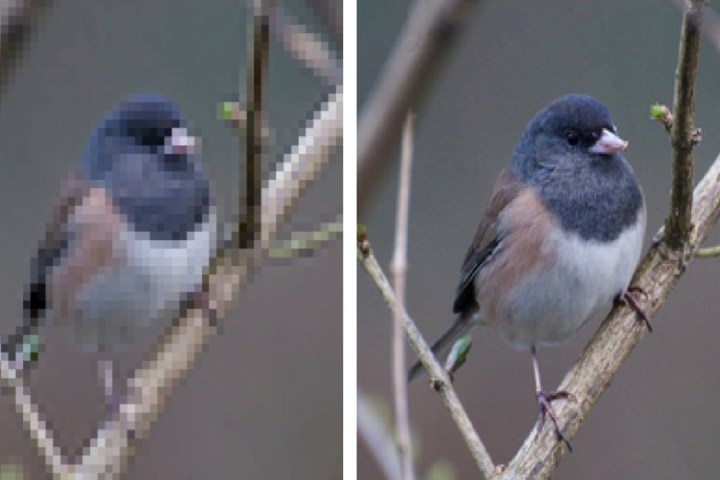
What they have developed is a tool called EnhanceNet-PAT, which uses artificial intelligence to create high-definition versions of low-res images. While the solution is not a miracle fix, it does produce a noticeably better result than previous attempts, thanks to some smart machine-learning algorithms.
“The task of super-resolution has been studied for decades,” Mehdi M.S. Sajjadi, one of the researchers on the project, told Digital Trends. “Before this work, even the state of the art has been producing very blurry images, especially at textured regions. The reason for this is that they asked their neural networks the impossible — to reconstruct the original image with pixel-perfect accuracy. Since this is impossible, the neural networks produce blurry results. We take a different approach [by instead asking] the neural network to produce realistic textures. To do this, the neural network takes a look at the whole image, detects regions, and uses this semantic information to produce realistic textures and sharper images.”
To train their algorithm, the researchers fed their neural network a large data set of images to build up its knowledge of different textures. The neural network only gets to see downsampled versions of the images, and is given the task of upsampling these pictures. Once the network produces an output image, the researchers then compare it with the original high-resolution image and tweak the algorithm to correct any errors, such as making it produce sharper edges or more realistic grass textures where it has not done so. After a while, the algorithm is able to do this on its own with no human intervention necessary.
“There are a lot of applications for this,” Sajjadi continued. “From upsampling old movies to 4K quality, restoring old family photographs that are too blurry when you want to get a large print, over to more general applications such as improving object detection. [It also] turns out that using our algorithm on images makes it easier for other neural networks to detect objects in images, which has wide applications, from Google image search to detecting pedestrians in self-driving cars.”
You can check out a paper describing the work here.


